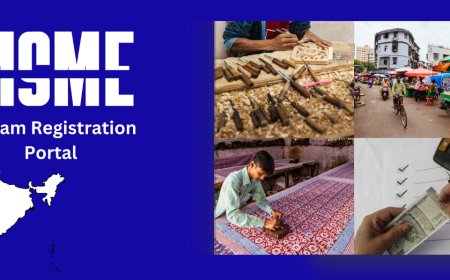Narayan Nagbali Puja at Trimbakeshwar, Nashik
The Narayan Nagbali Puja at Trimbakeshwar, Nashik, is a transformative three-day Vedic ritual that liberates ancestral souls and absolves snake-related sins, paving the way for peace, prosperity, and spiritual growth.
The Narayan Nagbali Puja is a profound Vedic ritual performed to address ancestral curses (Pitru Dosh) and the sin of harming a snake, particularly a cobra, which holds sacred significance in Hindu tradition. This unique three-day ceremony, exclusively conducted at Trimbakeshwar in Nashik, Maharashtra, combines two distinct rituals: Narayan Bali Puja, aimed at liberating the souls of ancestors who died unnaturally, and Nagbali Puja, performed to atone for harming a snake. Trimbakeshwar, revered as one of the twelve Jyotirlingas, is the only location prescribed for this ritual in ancient texts like the Garuda Purana and Dharma Sindhu. This comprehensive blog explores the significance, procedure, benefits, costs, and practical details of performing Narayan Nagbali Puja at Trimbakeshwar, Nashik.
The Narayan Nagbali Puja at Trimbakeshwar, Nashik, is a transformative three-day Vedic ritual that liberates ancestral souls and absolves snake-related sins, paving the way for peace, prosperity, and spiritual growth. Performed in the divine ambiance of the Trimbakeshwar Temple and enhanced by the sacred Godavari River, this puja is a powerful remedy for Pitru Dosh and Sarpa Dosh.
Why Trimbakeshwar for Narayan Nagbali Puja?
Trimbakeshwars unparalleled spiritual and astrological significance makes it the ideal location for Narayan Nagbali Puja:
-
Sacred Jyotirlinga: The Trimbakeshwar Temple houses a unique three-faced Jyotirlinga representing Lord Brahma, Vishnu, and Shiva, amplifying the rituals power to resolve karmic debts.
-
Godavari River and Kushavarta Kund: The puja is performed near the sacred confluence of the Godavari and Ahilya rivers or at the Kushavarta Kund, believed to originate from Brahmgiri hills. A purifying bath in these waters cleanses negative energies, enhancing the rituals efficacy.
-
Vedic Expertise: Authorized Tamprapatradhari Purohits, certified by the Trimbakeshwar Purohit Sangh, perform the puja with strict adherence to Vedic traditions, ensuring authenticity and spiritual potency.
-
Scriptural Mandate: Ancient texts like the Garuda Purana, Skanda Purana, and Dharma Sindhu designate Trimbakeshwar as the exclusive site for Narayan Nagbali Puja, emphasizing its sanctity for ancestral and snake-related remedies.
Purpose of Narayan Nagbali Puja
The Narayan Nagbali Puja serves two primary objectives:
-
Narayan Bali Puja: This ritual liberates the souls of ancestors who died unnaturally (e.g., through accidents, suicide, snakebites, murder, or natural disasters) or whose funeral rites (Shradha) were not performed. Such souls, unable to attain moksha (liberation), may cause Pitru Dosh, leading to challenges like financial instability, marital delays, childlessness, or health issues. The ritual mimics a Hindu funeral, using a wheat-flour effigy to invoke and release the soul.
-
Nagbali Puja: This is performed to atone for the sin of killing a snake, especially a cobra, considered sacred in Hinduism. It involves offering last rites to a snake effigy, seeking forgiveness and removing Sarpa Dosh (snake curse).
The puja is recommended for those experiencing:
-
Pitru Dosh or Sarpa Dosh in their Kundali.
-
Persistent obstacles in marriage, career, or finances.
-
Chronic health issues or family disputes.
-
Childlessness or problems with progeny.
-
Unexplained misfortunes, bad omens, or recurring nightmares.
-
The sin of harming a snake, knowingly or unknowingly.
Procedure of Narayan Nagbali Puja
The Narayan Nagbali Puja is a three-day ritual conducted at the Ahilya Godavari Sangam or Sati Maha-Smashan near the Trimbakeshwar Temple. Each day involves specific rituals, typically lasting 23 hours, performed by experienced pandits. Below is a detailed breakdown:
Day 1: Narayan Bali Puja
-
Purification Bath: Devotees begin by bathing in the Kushavarta Kund or Godavari River to cleanse spiritual impurities. New white attire is worndhoti and kurta for men, saree or salwar suit for womenavoiding black, green, or blue colors.
-
Sankalp (Vow): The pandit recites a pledge, stating the devotees intent to resolve Pitru Dosh for themselves or their family.
-
Ganesh Puja: The ritual starts with prayers to Lord Ganesha to remove obstacles and ensure a smooth ceremony.
-
Kalash Sthapana: Two copper pots with golden idols of Lord Vishnu and Vaivasvat Yama are set up and worshipped to invoke divine energies.
-
Pinda Daan: Ten rice balls (pindas) mixed with sesame seeds, honey, and ghee are offered on darbha grass to honor departed ancestors. These pindas are later immersed in the river.
-
Effigy Ritual: A wheat-flour effigy is created to invoke the ancestral soul, with Vedic mantras from the Garuda Purana chanted to facilitate its liberation.
Day 2: Nagbali Puja
-
Snake Effigy Ritual: A wheat-flour effigy of a cobra is crafted, and its last rites are performed to atone for the sin of harming a snake.
-
Mantra Chanting: Mantras such as Om Namah Bhagavate Vasudevaya are recited to appease the snake deity and seek forgiveness.
-
Offerings: Sacred items like sandalwood paste, flowers, sesame seeds, and ghee are offered to the effigy, which is later immersed in the Godavari River.
-
Vishnu Worship: Prayers to Lord Vishnu are offered to ensure spiritual purification and balance.
Day 3: Concluding Rituals
-
Swasti Punyahavachanam: Lord Ganesha is worshipped again to burn negative energies and ensure the rituals success.
-
Golden Snake Worship: A small gold or silver snake idol (minimum 1 gram) is worshipped and donated to the pandit, symbolizing the release of Sarpa Dosh.
-
Final Pinda Daan: Four pindas are offered to Lord Vishnu, Brahma, Shiva, and Yama, with a fifth pinda dedicated to the wheat-flour effigy. Additional offerings, such as new clothes or a cow, may be given to a Brahman.
-
Coronation Worship: The puja concludes with prayers to Lord Trimbakeshwar (Shiva) at the temple, followed by blessings from the pandit.
-
Visarjan: All effigies and offerings are immersed in the Godavari River, signifying the liberation of ancestral souls and the snake spirit.
Items Required for the Puja
Devotees must arrange specific items, though many pandits include these in the puja package:
-
Clothing: New white dhoti, kurta, and towel for men; white saree, blouse, and dupatta for women. These are discarded after the puja.
-
Puja Samagri: A gold or silver snake idol (minimum 1 gram), five pieces of new cloth, betel leaves, betel nuts, sandalwood paste, sesame seeds, honey, ghee, rice, coconuts, flowers, and incense sticks.
-
Additional Items: Copper pots, darbha grass, and holy water from the Kushavarta Kund or Godavari River.
-
Note: Some pandits provide all materials, so confirm inclusions when booking.
Cost of Narayan Nagbali Puja
The cost varies based on the type of puja and inclusions:
-
Individual Puja: ?5,100?8,000, covering puja materials, priest fees, and sometimes meals.
-
Group Puja: ?1,100?3,000 per person, conducted in a shared hall.
-
Premium Puja: ?10,000?17,000 for a couple, including accommodation, additional rituals, or multiple priests.
-
Dakshina: Additional offerings to the pandit are customary but should be agreed upon upfront.
Confirm the total cost with the pandit to avoid hidden charges. Some packages include accommodation or food, especially for outstation devotees.
Dates and Timings
The puja is most effective on astrologically favorable days, determined by the devotees Kundali and Nakshatra:
-
Preferred Periods: Pitru Paksha (SeptemberOctober), Putrada Ekadashi, or the 7th day after Amavasya.
-
Favorable Nakshatras: Hasta, Pushya, or Ashlesha.
-
Avoided Days: Ashtami, Dasami, Ekadashi, eclipse days, or Dhanishtha Panchak.
-
Muhurat: Typically 23 auspicious times per month, often starting in Brahma Muhurta (4:00 AM6:00 AM).
Booking in advance is essential, especially during Pitru Paksha or Nag Panchami, due to high demand. Contact pandits via Trimbakeshwar Purohit Sangh for specific 2025 dates.
Benefits of Narayan Nagbali Puja
The puja offers profound spiritual and material benefits:
-
Liberation of Ancestral Souls: Resolves Pitru Dosh, helping ancestors attain moksha and benefiting seven generations.
-
Removal of Sarpa Dosh: Absolves the sin of harming a snake, reducing related misfortunes.
-
Financial and Career Growth: Promotes prosperity, business success, and career stability.
-
Family Harmony: Resolves marital delays, childlessness, and family conflicts.
-
Health and Well-Being: Alleviates chronic illnesses and protects against negative energies.
-
Spiritual Elevation: Strengthens divine and ancestral connections, fostering inner peace.
Choosing a Reliable Pandit
Selecting an authorized pandit ensures the pujas authenticity and effectiveness:
-
Tamprapatradhari Purohits: Choose priests registered with the Trimbakeshwar Purohit Sangh (Reg. No. F-352) to avoid unauthorized practitioners.
-
Recommended Pandits:
-
Pandit Jay Narayan Shastri (+91 7887888755): Expert in Vedic rituals.
-
Pandit Manoj Guruji (+91 8551855211): Offers free Kundali analysis.
-
Pandit Vidyanand Guruji (+91 7030000788): Known for precise ceremonies.
-
-
Verification: Look for the Purohit Sangh logo or Tamrapatra on the pandits website or visiting card.
-
Transparency: Discuss costs, inclusions, and procedures upfront to avoid issues.
Visit Purohit Sangh for trusted pandit contacts.
Practical Tips for Devotees
-
Travel Planning: The nearest airport is Shirdi International Airport (100 km), and Nashik Railway Station is 30 km away. Book travel and accommodation early, especially during festive seasons.
-
Accommodation: Many pandits include stay arrangements in puja packages, or choose dharamshalas, lodges, or hotels near the temple.
-
Kundali Analysis: Request a Kundali check to confirm Pitru Dosh or Sarpa Dosh before booking.
-
Preparation: Arrive by the evening before or 6:00 AM on the first day. Follow the pandits instructions regarding fasting or post-puja restrictions (e.g., avoiding non-vegetarian food or alcohol).
-
Mundan: If the devotees father is deceased, shaving the head (mundan) may be required before the puja, as per Vedic rules.
-
Online Puja Option: For those unable to travel, some pandits offer live-streamed pujas with videos and photos shared via WhatsApp.
Additional Remedies
To enhance the pujas effects, pandits may recommend:
-
Mantra Chanting: Recite Om Namah Shivay or Vishnu mantras 108 times daily.
-
Charity: Offer food, clothes, or water to a Peepal tree on Saturdays.
-
Nag Panchami Vrat: Fast and offer 11 coconuts to a river on Nag Panchami.
-
Rudraksha or Yantra: Wear a Rudraksha or install a specific yantra as advised.


























